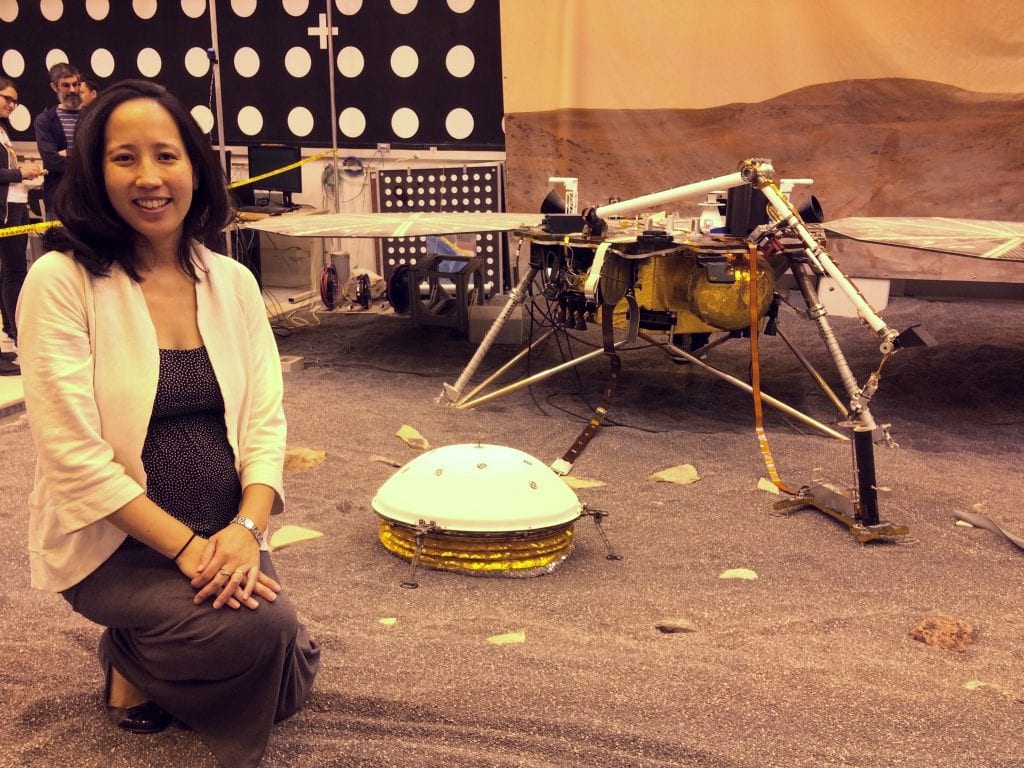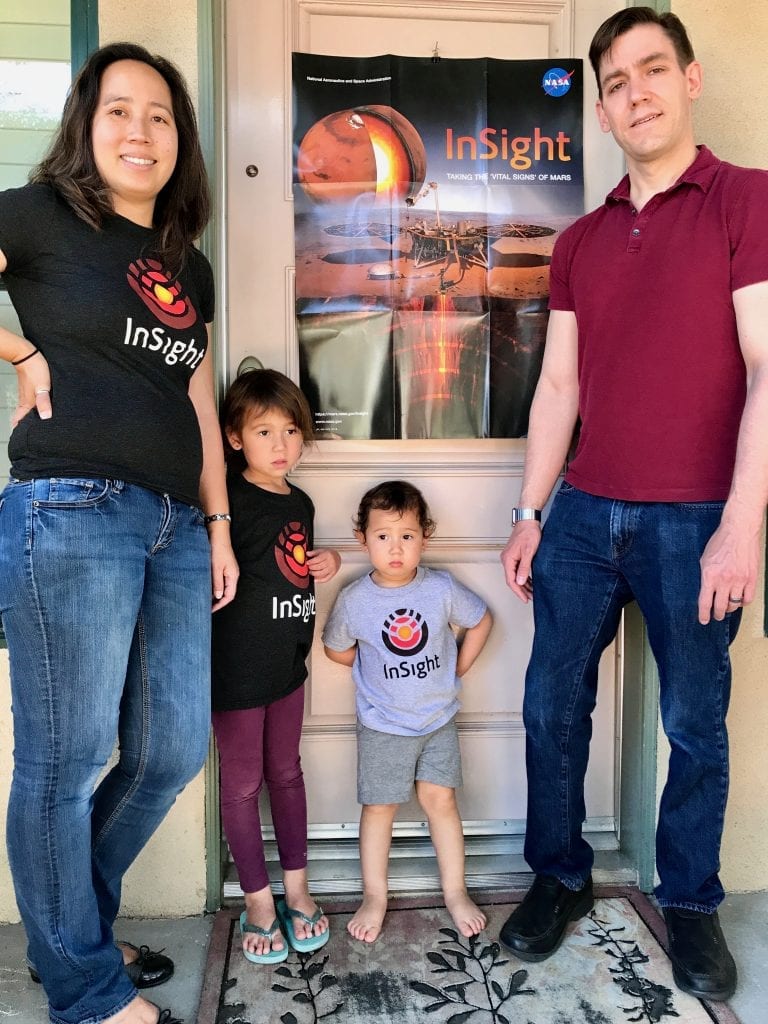
Pauline Hwang is a working parent here on Earth, but she spends her days looking to the heavens. Hwang works at NASA’s Jet Propulsion Laboratory (JPL) in Pasadena as the mission operations system manager for the Mars 2020 mission, which will land the Perseverance rover on the planet to study the possibilities for life on Mars.
The rover is set to launch on July 20 from Cape Canaveral, Fla., and is expected to arrive on the planet roughly 6½ months later, in February. You can watch the launch virtually at https://mars.nasa.gov/mars2020/.
It won’t be Hwang’s first big rover launch. During her nearly 20-year career at JPL, Hwang has worked on the Dawn Project (a space probe that studied the protoplanets of the asteroid belt), the prior Mars rover missions – Spirit, Opportunity and Curiosity – and, most recently, a Martian lander project called InSight that touched down on the planet’s surface in November 2018.
The Colorado native earned her bachelor’s degree in aerospace engineering at the University of Colorado, and arrived in Southern California in 2001 to work at JPL and pursue a master’s degree of astronautics at the University of Southern California. She recently moved to the foothills of Altadena from Sierra Madre with her husband and two kids.
What are your primary responsibilities on this rover project?
Since the rover is not at Mars yet, I’m leading the effort to get the flight team and the tools ready to operate a complex robotic rover on Mars. I have a large team of people I currently manage who are building and bringing together key tools to help visualize data we get from our instruments on the rover, as well as the tools required to plan and command what the rover will do on a given Martian day [called a “sol,” short for “solar day,” to distinguish from an Earth day]. In addition to that, I am helping to assemble and train the large flight operations team of 200-plus that needs to be ready to operate a rover on Mars on Day (Sol) 0 of landing.
What is it like to work on Mars time?

We have the rover complete most science and robotic activity during the Martian daytime because that has the best light for photos and observations, and is the warmest time to operate machinery, which requires less heating and energy usage. Turns out the Martian day is about 40 minutes longer than Earth, so 9 a.m. on Mars does not match 9 a.m. on Earth. To follow the Mars day, we have to wake up every day on Earth about one hour later, which really messes with your body’s internal clock when we are having to wake up at 10 a.m., then 11 a.m., then 12 p.m., etc. … all the way through the night (2 a.m., 3 a.m. …).
The last time I had to really go through Mars time for a couple of months was when I was working on the Curiosity rover in 2012 and was in my first trimester [of pregnancy] with our first child. Between being pregnant and going through Mars time, you can safely say I don’t remember much of that period, but I remember feeling like I was in a dreamlike state during a lot of it. And it was fun to be having breakfast at 9 p.m. I was able to check out some new restaurants that served breakfast all the time. I was highly impressed with others who had families and how they juggled their schedules. Many parents had to go to work starting at 12 a.m.-2 a.m. for their Mars shift for four days and then reset back into Earth days when they had their days off. We all needed lots of coffee and treats to keep us going!
What have been your biggest challenges as a female in the male-dominated space industry?
I was used to being in a male-dominated atmosphere already because I went to an engineering school. It was there I had already observed how differently males and females attacked problems and workload. When I started working at JPL, it did not bother me that there were more males than females. My biggest challenge/epiphany was realizing that everyone, including me, has this internal unconscious bias of who could make a good manager (you automatically picture similar people who are currently managers) and how certain genders should behave in meetings. For example, it is accepted for a man to be loud, short and direct, but for a woman it can be poorly received and considered too blunt.
How might your team celebrate what will hopefully be a big success when Perseverance Lands in February?
Based on Curiosity’s landing on Mars in 2012 and InSight’s landing on Mars in 2018, each landing day event has gotten bigger with more social media coverage. It’s been great to engage the public. I will be at JPL for the event and will be on pins and needles waiting to hear if we in fact landed safely on Mars.
Do you envision human travel to Mars in your own kids’ lifetime?
I think it is possible to accomplish interplanetary space travel during my kids’ generation, and I hope we do! It is a sign that as a nation and world, we have finally come together to look beyond just us and have decided to push the limits again with what we can do. And if that is true, if people have finally started thinking beyond just themselves, then that means more people are no longer poor and just trying to make ends meet and have the ability to think about what is beyond Earth and us.

































